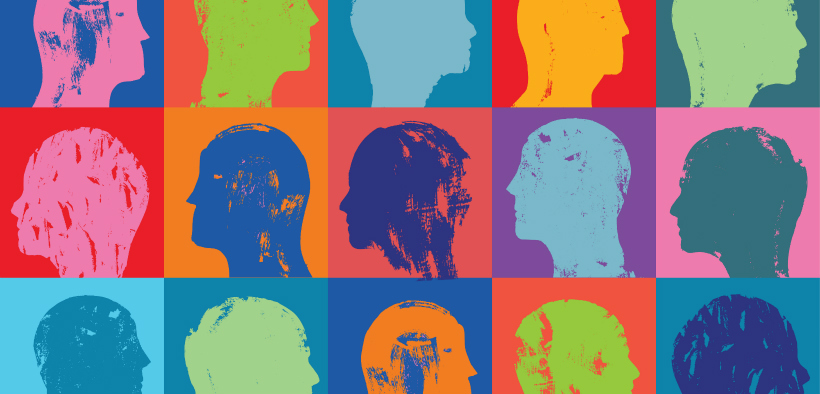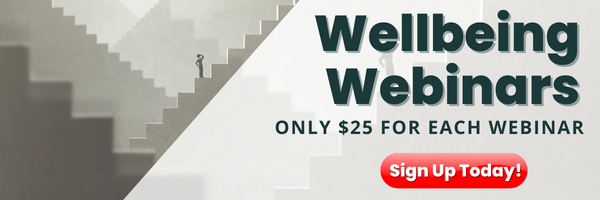This article first appeared in Academic Leader on October 19, 2020. © Magna Publications. All rights reserved.
Be kind. It’s my first pandemic.
I saw this statement on a button as I was scrolling through social media, and across the past three months, I have frequently returned to it as my institution has navigated the challenges associated with reopening a residential college in the time of COVID-19. For me, the primary academic leader, the weight of every decision has felt immense as I have juggled responsibilities to our students with the concerns of our faculty.
One other detail of note: I stepped into this office in June. Being a first-time vice president is a challenge under ideal conditions, but beginning this role mid-pandemic has taken its toll on my well-being, as it has on so many colleagues across the country. As a psychologist, I’m perhaps a step ahead in being attuned to my mental and physical health, but even so, these unprecedented circumstances have forced me to practice what I preach in a way that I never have.
In the spirit of helping others, I’m sharing five empirically based strategies that have helped me weather this storm.
Strategy 1: Set boundaries to manage emotional contagion
Boundaries are good for many reasons, but in this particular climate, I’ve found them necessary to help manage what psychologists call emotional contagion—“the tendency to automatically mimic and synchronize expressions, vocalizations, postures, and movements with those of another person’s [sic] and, consequently, to converge emotionally” (Hatfield et al., 1993, p. 96). The pandemic has evoked strong, negative emotions in faculty, staff, and students. As the chief academic officer responsible for formulating academic policy in this climate, I was inundated with a lot of anxious and fearful emails. One faculty member in particular sent me articles at all hours of the day and night. This same faculty member then wanted to call me after hours to discuss the articles. For my own well-being, I had to develop strategies to manage my own emotions. Two things that worked for me were saying no to after-hours correspondence and employing email filters to route this faculty member’s messages to a separate folder where I could review them at my convenience. This way, I was not held captive to the “ping” of the inbox, where my own anxiety escalated as the volume increased.
Strategy 2: Find your friends and keep them close (metaphorically)
We all need a cheering section. When much of the feedback comes from the squeakiest wheels (read: the most disgruntled faculty), it’s even more imperative that you balance the negative with the positive. Who better to provide you with a reminder of your strengths—as both a leader and a human—than your friends? A meta-analysis by Harandi et al. (2017) found a moderate effect size for mental health and social support, and importantly, it is quality and not quantity of the support that counts (Vandervoort, 1999), which bodes well for those at the highest levels of leadership. A mentor told me that being the VP of academic affairs is a lonely job, and while I enjoy the comradery of my cabinet colleagues, it has been an adjustment moving from the ranks of faculty to this position. I have regularly scheduled walks with one of my faculty friends during which work talk is off-limits. I have also worked to strengthen my relationships with friends and acquaintances not affiliated with work, which also serves to remind me that my career is not the totality of my identity.
Strategy 3: Find a way to focus
It is well established that stress negatively affects our executive functioning, which includes processes such as attention and concentration (Girotti et al., 2018). Additionally, stress is a risk factor for the development of psychiatric disorders, including depression. Perhaps it is not surprising that at times over the past few months I have felt unmotivated, lethargic, and unable to focus. Yet as we all know, the work has only amplified as we confront new challenges. So how does one get work done in a pandemic? While not a new strategy, I have revisited the Pomodoro technique, developed by Francesco Cirillo (2018). There is an interesting backstory to the method’s development, but in short, you outline a series of tasks that need to be done and then allocate 25 minutes of uninterrupted time to work on each task. Hold yourself accountable by using a timer. After the 25 minutes are up, take a five-minute break; for it to truly be a break, spend the five minutes on activities that don’t involve intense mental effort, such as stretching, watching a funny YouTube video, or getting a drink of water. After four Pomodori, the break extends to 15–30 minutes. At a time when being overwhelmed is the norm, maintaining focus for 25 minutes is manageable (though, I admit, not as easy as it sounds), and it’s satisfying to bring a task to completion. Even if I don’t finish the task at hand in 25 minutes, being able to put a check mark on my sheet next to the task to mark my progress provides some satisfaction and serves as a visual reminder of progress.
Strategy 4: Invest your energy in other activities
Having a purpose outside of work can help ensure that the work doesn’t encompass us. For me, one activity that renews my sense of purpose is creating mediocre art. Think wine-and-canvas outings or “one drawing a day” pandemic challenges. Abbott et al. (2013) found that artistic activities reduced stress more than nonartistic activities for university students. Kaimal et al. (2016) provide evidence that in a sample of healthy adults, making art significantly lowered cortisol levels (cortisol is the body’s primary stress hormone). You can even consider pulling in friends and family, thus bolstering your social support and strengthening the benefit of the activity. Besides carving out time to pursue hobbies, you throw extra energy into your family. Managing your well-being, then, is important to guarantee there is enough of yourself—the good stuff—left to share with them.
Strategy 5: Use mantras and meditation to buffer your psychological and physical health
Mantras are a form of concentrative meditation, which has been shown to reduce anxiety (Rausch et al., 2006). Because in stressful periods our ability to concentrate and focus is compromised, having a word or phrase as an anchor to return to helps disrupt the flurries of thoughts or, for some, the cascade of catastrophic thinking that can come from high-pressure situations. Besides providing psychological benefits, using mantras and other forms of meditation has been linked to positive physical health outcomes (Hussain & Bhushan, 2010). During periods of stress, being kind to yourself counts. I also believe it is helpful to have a visual cue to remind you of the mantra, so I’ve posted photos of mantras that are effective for me on my office bulletin board. If you need a more active form of meditation, consider a walking meditation. (See Hanh, 2011, for a nice overview of the practice.) I have used two spaces on our campus: the chapel labyrinth and a large, one-mile paved walking path. Walking in a circle, mindful of only the present moment, provides a nice respite from the stress we may feel while helping us reframe those stresses, even making us feel grateful for our opportunity to support faculty and students even amidst extraordinary difficulties.
Use of terms like self-care makes focusing on our well-being seem like a luxury. But the challenges that await leaders in higher education in this moment require them to be as healthy as possible so they can provide strong, effective leadership to their campus communities. A run-down chief academic officer is not only harming themselves, but the ripple effect of potentially poor decision making or faulty communication stemming from unmanaged stress could have irrevocable consequences for the campuses they serve. Because one’s experience of and managing of stress is highly individualized, you ultimately know what strategies will work best for you; but if you’ve never taken time to tend to your health in this way, I hope some of the ideas I have shared prove valuable.
Kristin C. Flora, PhD, is the Roscoe W. Payne endowed chair in philosophy and psychology at Franklin College and acting vice president of academic affairs. She served on the faculty for 13 years prior to accepting the role of Acting VPAA in June of 2020.
References
Abbott, K. A., Shanahan, M. J., & Neufeld, R. W. J. (2013). Artistic tasks outperform nonartistic tasks for stress reduction. Art Therapy, 30(2), 71–78. https://doi.org/10.1080/07421656.2013.787214
Cirillo, F. (2018). The Pomodoro technique. Random House.
Girotti, M., Adler, S. M., Bulin, S. E., Fucich, E. A., Paredes, D., & Morilak, D. A. (2018). Prefrontal cortex executive processes affected by stress in health and disease. Progress in Neuropsychopharmacology and Biological Psychiatry, 85, 161–179. https://doi.org/10.1016/j.pnpbp.2017.07.004
Hanh, T. N. (2011). The long road turns to joy: A guide to walking meditation. Parallax Press.
Harandi, T. F., Taghinasab, M. M., & Nayeri, T. D. (2017). The correlation of social support with mental health: A meta-analysis. The Electronic Physician, 9(9), 5212–5222. https://doi.org/10.19082/5212
Hatfield, E., Cacioppo, J. T., & Rapson, R. L. (1993). Emotional contagion. Current Directions in Psychological Science, 2(3), 96–100. https://doi.org/10.1111/1467-8721.ep10770953
Hussein, D., & Bhushan, B. (2010). Psychology of meditation and health: Present status and future directions. International Journal of Psychology and Psychological Therapy, 10(3), 439–451. https://ijpsy.com/volumen10/num3/273.html
Kaimal, G., Ray, K., & Muniz, J. (2016). Reduction of cortisol levels and participants’ responses following art making. Art Therapy, 33(2), 74–80. https://doi.org/10.1080/07421656.2016.1166832
Rausch, S. M., Gramling, S. E., & Auerbach, S. M. (2006). Effects of a single session of large-group meditation and progressive muscle relaxation training on stress reduction, reactivity, and recovery. International Journal of Stress Management, 13(3), 273–290. https://doi.org/10.1037/1072-5245.13.3.273
Vandervoort, D. (1999). Quality of social support in mental and physical health. Current Psychology, 18, 205–221. https://doi.org/10.1007/s12144-999-1029-8




